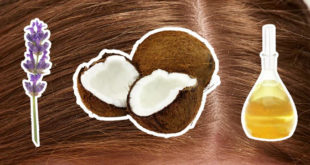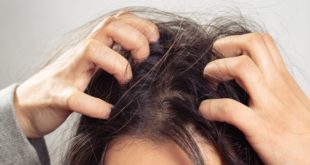Fix Burnt Hair:
Burnt hair got you down? We’ve got you covered.Those viral videos of people accidentally singeing off their hair are all fun and games—until you’re dealing with a case of your own burnt hair! Rest assured you’re not alone and that your hair will grow back. While you not-so-patiently wait for your mane to return to its former glory, there are a handful of remedies you can try to help your strands mimic their pre-burnt appearance. For some expert insight into dealing with burned hair, we reached out to stylist Amanda Epstein. She was eager to share some hot tips (pun intended) on what to do when you burn your hair and which products are best for burned strands.

BIOLAGE PROFESSIONAL:
Hydra Source Deep Treatment Pack Multi Use Hair Mask, A vegan, moisturizing deep treatment hair mask for dry, dull or damaged hair. Whether you left your hair wrapped around your curling iron a bit too long, went a little overboard with the flat iron, or had a mishap with the blow dryer, try not to panic. Next, Epstein insists on calling your stylist before trying to take burnt hair matters into your own hands. Since burned hair can’t be repaired, your stylist can help conceal some of the damage with some strategic cutting. Also, your stylist can help you come up with a game plan for how to save your remaining hair. While waiting for your appointment, there are a few things you can do to conceal the damage and care for your strands. Epstein says to start with a seriously nourishing hair mask.
Does Burned Hair Grow Back?
Yes, burnt hair absolutely grows back. Patience is key, though, because head hair grows at a rate of about six inches per year. The hair will grow from the roots at the scalp, and with time our burned strands will be a memory (and perhaps one you can even laugh about).
How to Get Rid of Burnt Hair Smells?
There’s nothing quite like the smell of burned hair, and that scent is decidedly dreadful! The best way to get rid of the smell is to shampoo and condition your hair. Having your stylist clip away some of the singed ends can also help. If you still notice the smell of burned hair lingering, try a hair perfume.
How Can You Prevent Accidentally Burning Your Hair?
Though heat styling will always cause some hair damage, there are a few ways to avoid completely scorching your strands. Step one is to use an innovative tool that’s not going to scorch your strands. For example, L’Oréal Professionnel Steampod Hair Straightener + Curling Iron features intelligent heat control, double technology plates that won’t snag, and a revolutionary steam delivery to help smooth hair. Epstein adds that you should also never skimp on a heat protectant! An excellent option is Redken Extreme Play Safe Heat Protection and Damage Repair Hair Treatment. Not only does the formula make for a more efficient blowout, but it also helps reduce the look of split ends by 70 percent and fortifies the hair for less breakage. Lastly, be mindful of the heat setting on your hot tools. The highest temp isn’t intended for all hair types; the finer your hair, the lower the setting should be. If you’re unsure which heat setting is best for your hair type and texture, start with a lower setting and work your way up.
Best Products to Help Care for Burned Hair:
A salon professional—and a bit of time—can help restore your strands to their pre-burnt glory. Meanwhile, incorporating some salon-quality hair care products into your regimen can help your hair look shiny, healthy, and beautiful. Start by swapping your regular shampoo and conditioner for a hair care system formulated for damaged hair. For example, the Matrix Total Results So Long Damage set is a three-step system that includes shampoo, conditioner, and lotion. It helps you realize your long-hair goals by reviving the look of weak and dried-out strands. The range is formulated with ceramides to boost shine and strength, which helps hair grow longer. If the heat damage has left your strands feeling extra parched, Epstein also recommends using a nourishing hair mask to your routine. The Biolage HydraSource Deep Treatment Pack Multi Use Hair Mask and Kérastase Resistance Masque Extentioniste Hair Mask for Damaged Hair—both mentioned above—are two solid choices. The allure of perfect, styled hair often leads us down the path of experimentation, but sometimes, those endeavors can result in burnt hair—a distressing condition that leaves locks brittle, damaged, and in dire need of rescue. Fear not, for the expertise of a seasoned hair stylist can provide a roadmap to recovery. In this comprehensive guide, we’ll explore the causes of burnt hair, unravel the science behind the damage, and delve into the actionable steps a hair stylist recommends to restore your tresses to their former glory.
Understanding Burnt Hair:
Burnt hair is the unfortunate aftermath of excessive heat exposure or chemical treatments gone awry. Whether it’s the consequence of relentless heat styling, overzealous use of hot tools, or the aftermath of a poorly executed chemical process, the signs of burnt hair are unmistakable—dryness, frizz, split ends, and an overall lackluster appearance.
Common Causes of Burnt Hair:
Excessive Heat Styling: Frequent use of flat irons, curling wands, or blow dryers without proper heat protection. Chemical Overprocessing: Aggressive use of chemical treatments such as bleaching, perming, or relaxing. Poorly Executed DIY Treatments: Attempting at-home treatments without proper knowledge or following incorrect instructions.
The Consequences of Burnt Hair:
Loss of Moisture: Burnt hair often becomes extremely dry, losing its natural moisture and shine. Breakage and Split Ends: Weakened hair structure leads to increased breakage and the formation of split ends. Dull Appearance: The natural luster of healthy hair is replaced by a dull and lackluster finish.
The Science of Burnt Hair:
The hair shaft is composed of a protein called keratin, and when exposed to excessive heat or harsh chemicals, the delicate balance of its structure is disrupted.
Impact on Hair Structure:
Cuticle Damage: The outer layer, or cuticle, of the hair becomes damaged, leading to a rough and uneven surface. Protein Breakdown: Excessive heat can cause the breakdown of keratin proteins, compromising the hair’s strength. Moisture Loss: Burnt hair struggles to retain moisture, resulting in a parched and dehydrated texture.
Embarking on the Road to Recovery:
While the journey to revive burnt hair may seem daunting, a hair stylist’s expertise offers a ray of hope. Here’s a step-by-step guide to help you navigate the path to recovery and restore your hair’s health and vitality.
Assessing the Damage:
Before initiating any recovery plan, a thorough assessment of the damage is essential. A hair stylist considers factors such as the extent of heat or chemical exposure, the current condition of the hair, and the client’s hair type. This personalized evaluation lays the foundation for a tailored recovery strategy.
Professional Evaluation:
Consultation with a Stylist: Seek professional advice to assess the severity of the damage and determine the best course of action. Hair Type Consideration: Different hair types may require varied approaches, and a stylist can provide insights into the unique needs of your hair.
Trim Away the Damage:
One of the initial steps in rescuing burnt hair involves strategic trimming to remove the damaged ends. While this may seem counterintuitive, it sets the stage for healthy regrowth and prevents the spread of damage up the hair shaft.
Trimming Guidelines:
Precision Trimming: A skilled stylist can perform precision trims to eliminate split ends and damaged sections. Regular Maintenance: Schedule regular trims to maintain the health of your hair and prevent further damage.
Deep Conditioning:
Deep conditioning treatments are a lifeline for burnt hair, infusing much-needed moisture and nutrients. Opt for high-quality, salon-grade deep conditioning products or indulge in professional treatments to revitalize your hair from within.
Deep Conditioning Ritual:
Moisture-Rich Formulas: Choose deep conditioning products enriched with hydrating ingredients like keratin, argan oil, or shea butter. Regular Application: Incorporate deep conditioning into your routine at least once a week for optimal results.
Protein Treatments:
Burnt hair often lacks the essential proteins that form its structural backbone. Protein treatments come to the rescue, helping rebuild the weakened hair shaft and restoring strength and resilience.
Protein Treatment Recommendations:
Amino Acid Formulations: Look for products containing amino acids, as they contribute to the reconstruction of damaged protein structures. Balanced Usage: While beneficial, excessive use of protein treatments can lead to stiffness, so strike a balance based on your hair’s needs.
Heat Styling Moderation:
To prevent further damage and promote healing, it’s crucial to moderate the use of heat styling tools. Adopting heat-free styling techniques and incorporating protective measures can aid in the recovery process.
Heat Styling Guidelines:
Low Heat Settings: When using styling tools, opt for lower heat settings to minimize damage. Heat Protectants: Always apply a quality heat protectant before using hot tools to create a barrier against heat damage.
Hydration from Inside Out:
The condition of your hair is often a reflection of your overall health. Maintaining a well-hydrated body contributes to the hydration of your hair, promoting a glossy and vibrant appearance.
Lifestyle Habits for Hydration:
Adequate Water Intake: Drink sufficient water daily to keep your body and hair hydrated. Balanced Diet: Consume a diet rich in vitamins, minerals, and omega-3 fatty acids to support overall hair health.
Professional Treatments:
Consider professional hair treatments offered by salons to accelerate the recovery process. These treatments, ranging from keratin treatments to moisture-infusing therapies, are designed to target specific concerns and provide intensive care.
Professional Treatment Options:
Keratin Treatments: Ideal for smoothing and strengthening damaged hair. Olaplex Treatments: Known for repairing broken bonds in the hair structure, enhancing strength and resilience.
Patience and Consistency:
Recovering burnt hair is a gradual process that requires patience and consistency. Expecting immediate results may lead to frustration, so adopting a long-term perspective is crucial for a successful recovery journey.
Managing Expectations:
Realistic Timelines: Understand that hair recovery takes time, and visible improvements may unfold over weeks or months. Consistent Care: Stay committed to your personalized hair care routine, incorporating the recommended treatments and lifestyle adjustments.
Final Words:
In the capable hands of a skilled hair stylist and armed with a strategic recovery plan, burnt hair can undergo a resilient transformation. By acknowledging the causes, understanding the science, and implementing a holistic approach to recovery, you pave the way for healthier, revitalized tresses.



